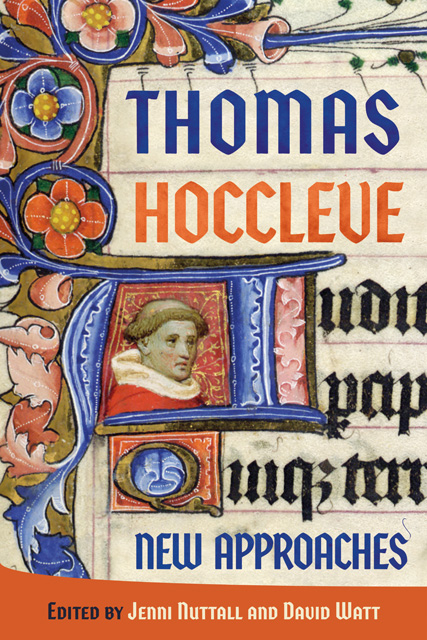7 - ‘Ransakid’ by Death: Body, Soul and Image in Hoccleve’s ‘Learn to Die’
Published online by Cambridge University Press: 11 January 2023
Summary
What is Death, what does it do to us, and who are we when it appears? In Hoccleve’s ‘Learn to Die’, Death appears variously as an abstract concept, a speaking voice, a powerful spiritual agent, a series of physical symptoms and as a social and ethical event. And even when Death is personified, the gendering of that personification moves back and forth between male and female. This essay considers Hoccleve’s fluid and variable representations of Death, and the ways in which they challenge our understanding of the relation between body and soul, and between literal and figurative language. Hoccleve offers a suggestive indication of this complex and layered understanding of death as a forceful agent in his startling image, early in the poem, of the young man as ‘ny ransakid’ by death (LTD 92). Forensic examination of this phrase can help us understand some of the problematic representations of death and dying in the poem, as Hoccleve takes us from the Disciple’s desire for knowledge to a dramatic rendition of the power of feeling, across a range of bodily and mental affects, and back and forth between the four speakers: Sapience, the Disciple, the Ymage and an uncharacteristically restrained narrative observer.
‘Learn to Die’ is unique in the sequence of the six works that constitute the Series, given the absence of both the familiar, confessional first-person narrator and the framing companionship of the narrator’s friend. Part Four begins very abruptly: the first conjunction of its rubric (‘[…] et incipit ars vtillissima sciendi mori’) refers back to and completes the explicit of the preceding text (‘Explicit moralizacio […]’), and the text begins with the first words of the dialogue, without any narrative frame or introduction. Hoccleve is following his source, Henry Suso’s Horologium Sapientiae (ii.2), quite closely in structure, in content and in the naming of the first two speakers: Sapience (sapientia) and the Disciple (discipulus). But without any kind of narrative frame, and in the absence of the two familiar speakers, Hoccleve and his Friend, the effect is disorienting. As Amy Appleford argues, this text seems to start anew, ‘isolated from the social context that frames most of the other poems’.
- Type
- Chapter
- Information
- Thomas Hoccleve New Approaches , pp. 142 - 164Publisher: Boydell & BrewerPrint publication year: 2022



